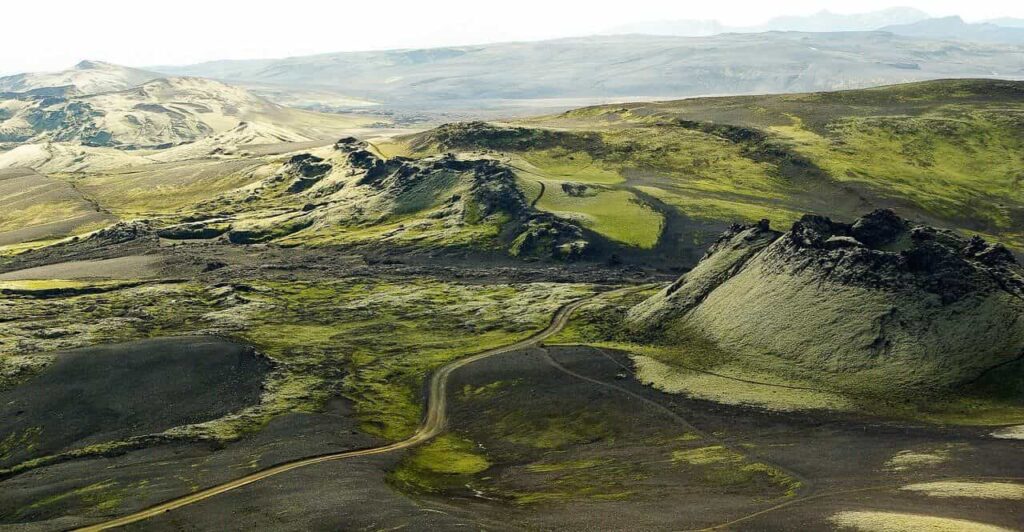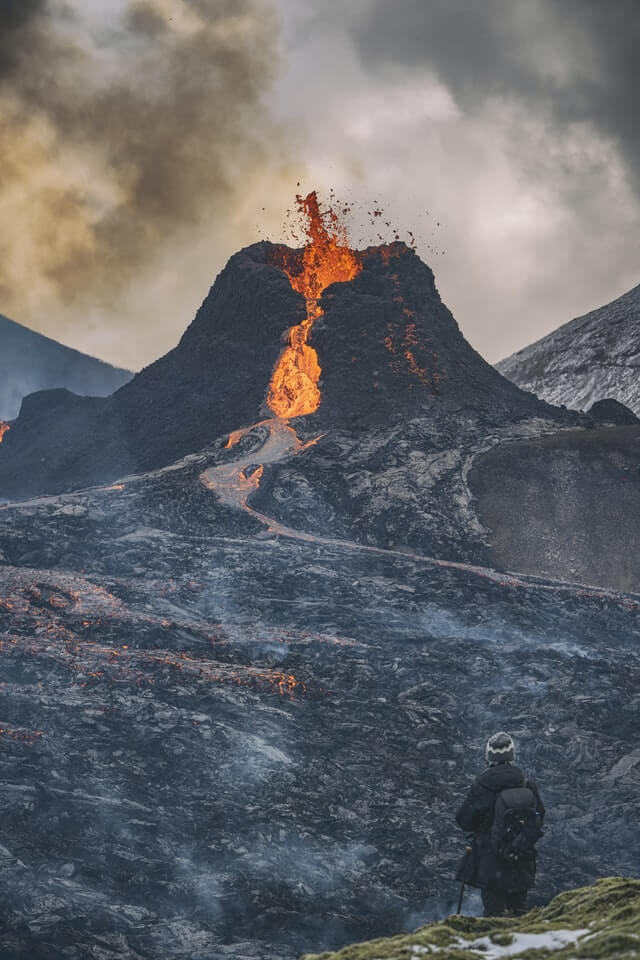Iceland’s volcanoes formed the country in its unlikely location in the northern Atlantic, shaped its history, and now attract millions of tourists each year. The country’s many volcanoes, geysers, and striking lava-shaped landscapes power the travel industry. The tectonic plates that cause this volcanic activity are currently showing their power in the form of an ongoing volcano eruption in the Fagradalsfjall volcano. This eruption will not be as destructive as Eyjafjallajökull in 2010 but will still be a spectacular sight to see.
Causes of Iceland’s Volcano Eruptions
According to some rankings, Iceland has the fourth most volcanoes in the world, which is a very high ranking for a country that’s only about 103,000 sq km big. The reason for its above-average rate of tectonic activity is its location. The country is on the Mid-Atlantic Ridge, which is the place where the Eurasian and North American plates meet. As the plates shift, magma flows up to the surface.
There are particular spots along a tectonic plate boundary called hot spots, where magma pools particularly close to the surface. Iceland is located on top of one of those spots. The country’s landmass was formed over millions of years of eruptions slowly building up the island. These continuous eruptions are why this is one of the youngest landmasses in the world.
Local volcanic activity has caused severe disasters in the past. In 1783, an eruption killed off most of the country’s crops and caused a famine that killed about a quarter of the country. Luckily, modern-day volcanic activity has not been nearly as destructive.
Volcanic activity literally powers Iceland. A quarter of the nation’s electricity comes from geothermal plants. That’s not even counting the millions of krona that the volcanic landscape generates in tourism revenue that powers the economy.

Where to See Iceland Volcanoes
Most visitors want to see volcanoes or other geothermal phenomena. After all, there is no other place on Earth with so much volcanic activity concentrated in such a small place. There are many opportunities to see all kinds of volcanic activity on the island, some of them just a few minutes from Reykjavik.
A trip to Iceland is a prime opportunity to see a real, active volcano (a volcano is considered active if it has erupted in the past 10,000 years, so usually they are still safe to visit). One of the most famous ones is Mount Hekla, which terrorized medieval Icelanders so much they considered it a gateway to hell.
Volcanic mountains are not the only example of volcanic activity you could see. The country’s famous hot springs and spas, including the Blue Lagoon, are powered by geothermal volcanic activity. Geysers, steam vents, and calderas are other examples of volcanic activity that pepper the landscape.
Taking a road trip through the countryside is the best way to get up close with volcanic activity in a safe manner. Whether you are interested in hot springs, photography, or learning about the science behind volcanoes in one of the country’s many interactive museums, you can explore volcanic activity at your own pace.

The Fagradalsfjall Volcano
There’s no better proof of Iceland’s lively volcanic activity than the ongoing volcano eruption in the valley of Geldingadalir, which some scientists have begun calling the Fagradalsfjall Volcano.
Fagradalsfjall is a tuya, a rare type of flat-topped volcano that only happens in regions with volcanic activity and glaciers. It is part of a larger volcanic system with many fissures and cones. Fagradalsfjall is only a few kilometers from the capital, Reykjavik. After many years of volcanic quiet in this region, scientists began measuring light earthquakes in late 2019. The seismic activity increased into early 2021, signaling that an eruption was about to happen.
Finally, on March 19, a fissure vent in the Geldingadalir valley opened up and began spouting lava. Since then, a total of six fissures have opened up in Fagradalsfjall, expelling lava and gas. The eruptions have not stopped since mid-March, and after thousands of years of dormancy, Fagradalsfjall is now continuously spewing lava.
In the weeks since the eruption, lava flows have built up, forming four new craters with gently sloping shields. The volcano shows no sign of stopping and could continue at this pace for a few weeks, months or even years. Scientists speculate that this could be a sign of more volcanic activity in the Reykjanes Peninsula (the region near the capital) in the following years.
Is it Safe to Visit?
Many travelers probably groaned aloud when they heard the news of another Icelandic volcano eruption. In 2010, Eyjafjallajökull’s eruption not only managed to disrupt trips to Iceland but shut down air travel across the European continent. However, this recent volcano eruption probably won’t cause similar problems. Eyjafjallajökull was an explosive event with large ash clouds, while Fagradalsfjall’s eruption mostly consists of oozing lava flows that are confined to the ground.
This volcano eruption probably won’t disrupt your travel plans to Iceland. In fact, Fagradalsfjall has become the country’s newest tourist attraction. Many curious locals, visitors, and scientists are flocking to the area, which is only a short drive away from Reykjavik, to observe the slow progression of lava through the valley. Some have even tried to cook their breakfasts over the lava (in the name of science, of course).
This volcano eruption is relatively safe, as far as volcanoes are concerned. Lava flows are slow enough that people are not in any real danger, and the valley is uninhabited. Only a few archeological sites might be in the path of volcanic destruction. If you plan on visiting, you should still check with the Icelandic Met Office just in case, as they sometimes issue warnings if poisonous gas levels are high.
Volcanic activity is a huge reason why Iceland is such a unique place to visit. Volcanoes built the country out of a tectonic rift, shaped its history, and created the ethereal landscape that draws many travelers today. When you visit, be sure to check out the many sites that bear testimony to volcanic power, including the latest, ongoing volcano eruption.




